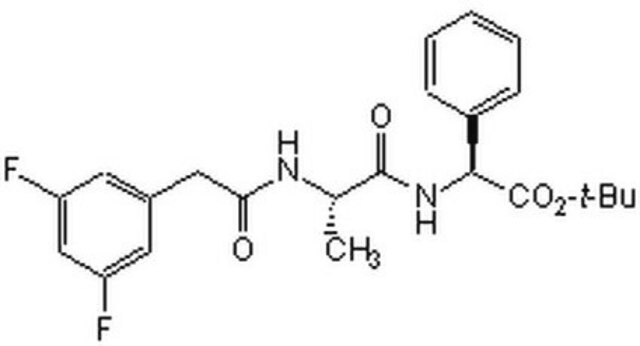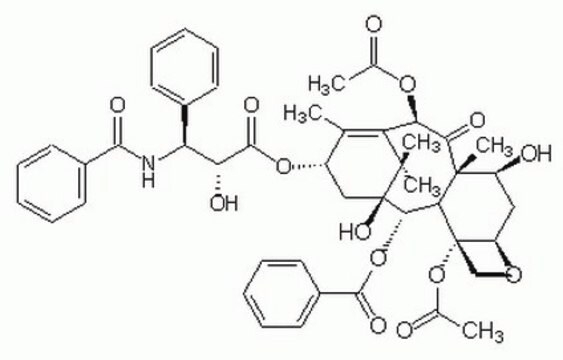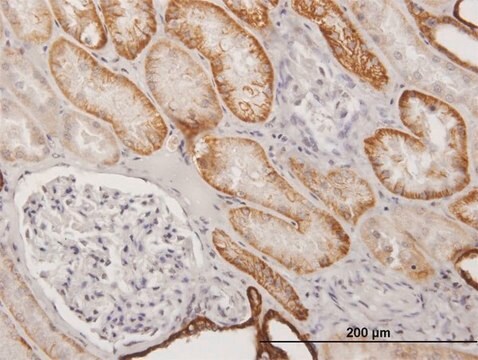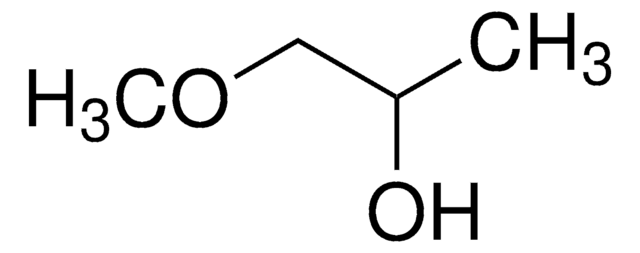Opis ogólny
Cadherins are cell-cell adhesion molecules acting in a homotypic, homophilic manner to help maintain tissue integrity. In the human kidney, several members of the cadherin family (including E- and N-cadherin, cadherin-6, -8 and -11) are expressed in a controlled spatiotemporal pattern. Cadherin-16, also called kidney-specific (Ksp-) cadherin, is exclusively expressed in the basolateral membrane of renal tubular epithelial cells and in the developing genitourinary tract. It has been shown that cadherin 16 supports leukemia inhibitory factor (LIF) induced multi-lineage differentiation of adult stem-like cells in kidney.
Specyficzność
Anti-CDH16 polyclonal antibody reacts with canine, rat, rabbit, human, mouse, and bovine cadherin 16, KSP-cadherin proteins.
Immunogen
Synthetic peptide directed towards the N terminal region of human CDH16
Zastosowanie
Anti-CDH16 polyclonal antibody is used to tag KSP-cadherin proteins for detection and quantitation by Western blotting and in cells and tissues by immunohistochemical (IHC) techniques. It is used as a probe to study the role of cadherin 16 in renal and genitourinary epithelial cell development and differentiation.
Działania biochem./fizjol.
CDH16 is a member of the cadherin superfamily, which are calcium-dependent, membrane-associated glycoproteins. CDH16 consists of an extracellular domain containing 6 cadherin domains, a transmembrane region and a truncated cytoplasmic domain but lacks the prosequence and tripeptide HAV adhesion recognition sequence typical of most classical cadherins. Expression is exclusively in kidney, where the protein functions as the principal mediator of homotypic cellular recognition, playing a role in the morphogenic direction of tissue development.This gene is a member of the cadherin superfamily, genes encoding calcium-dependent, membrane-associated glycoproteins. Mapped to a previously identified cluster of cadherin genes on chromosome 16q22.1, the gene localizes with superfamily members CDH1, CDH3, CDH5, CDH8 and CDH11. The protein consists of an extracellular domain containing 6 cadherin domains, a transmembrane region and a truncated cytoplasmic domain but lacks the prosequence and tripeptide HAV adhesion recognition sequence typical of most classical cadherins. Expression is exclusively in kidney, where the protein functions as the principal mediator of homotypic cellular recognition, playing a role in the morphogenic direction of tissue development. Publication Note: This RefSeq record includes a subset of the publications that are available for this gene. Please see the Entrez Gene record to access additional publications.
Sekwencja
Synthetic peptide located within the following region: SDRDEPGTANSDLRFHILSQAPAQPSPDMFQLEPRLGALALSPKGSTSLD
Postać fizyczna
Purified antibody supplied in 1x PBS buffer with 0.09% (w/v) sodium azide and 2% sucrose.
Oświadczenie o zrzeczeniu się odpowiedzialności
Unless otherwise stated in our catalog or other company documentation accompanying the product(s), our products are intended for research use only and are not to be used for any other purpose, which includes but is not limited to, unauthorized commercial uses, in vitro diagnostic uses, ex vivo or in vivo therapeutic uses or any type of consumption or application to humans or animals.
This page may contain text that has been machine translated.




![[Asn670, Leu671]-Amyloid β/A4 Precursor Protein 770 Fragment 667-676 trifluoroacetate salt ≥95% (HPLC), solid](/deepweb/assets/sigmaaldrich/product/images/296/089/259ad19e-25e1-4604-9077-8d4dbea518b6/640/259ad19e-25e1-4604-9077-8d4dbea518b6.jpg)



